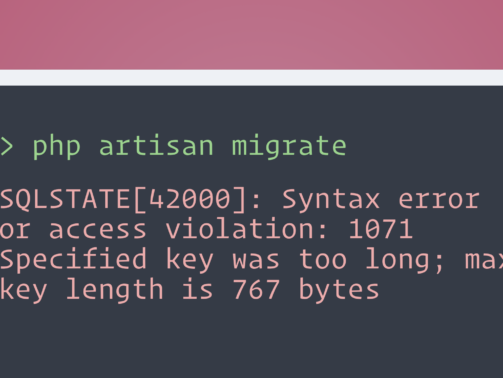This is a curated list of free tools for everything from productivity to hosting to development tools to designing. These tools are all digital i.e., either app, online service, or downloadable software. Most of them are either free or have limited ...
Laravel: Specified key was too long error on migration
When you install a new Laravel project with 'laravel new' and run the migration that comes with it you might get the following error: #php artisan migrate Migration table created successfully. SQLSTATE: Syntax error or access violation: 1071 Spe ...


